Renesas Electronics has added two new groups to its 32-bit RA family of microcontrollers (MCUs) with the 100 MHz RA4E2 and 200 MHz RA6E2 Arm Cortex-M33 microcontrollers designed for “high-performance applications” in small packages such as sensing, gaming, wearables, and appliances.
The new microcontrollers are equipped with 40 KB SRAM, 128 KB or 256 KB flash, and integrate various on-chip interfaces such as CAN FD, USB, QSPI, SSI, and I3C interfaces to offer an easy upgrade path for products based on other members of the Renesas RA Family.
Renesas RA4E2 MCU group
Both the RA4E2 and the RA6E2 are the most cost-effective microcontroller groups of the RA family with integrated CAN FD, with the RA4E2 group especially well-suited to cost-sensitive applications and other systems requiring relatively high performance, low power consumption, and/or small package size.
RA4E2 key features:
- CPU – Arm Cortex-M33 core with TrustZone @ up to 100 MHz
- Memory – 40 kB SRAM, 1kB standby SRAM
- Storage – 128kB flash, 4kB data flash to store data as in EEPROM
- Peripherals – GPIO, 12-bit ADC, 12-bit DAC, USB 2.0 full-Speed Device, SCI, SPI, I3C, HDMI CEC, SSI, PWM, and CAN FD
- Misc – Internal oscillator, low-voltage detection, internal reset function
- Power consumption – 82 µA / MHz in active mode while executing at 100 MHz
- Packages – 32- to 64-pin packages: LQFP64, BGA36, BGA64, QFN32, QFN48
- Temperature Range – -40 to 105°C
Five RA4E2 devices are available now with different packages from 32-pin to 64-pin. The RA4E2 is positioned as an entry-level MCU group clocked at 100 Mhz like the other RA4 microcontrollers.
Development can be performed in Renesas e2studio IDE, Keil MDK, or IAR EWARM, and the microcontroller group is supported by FreeRTOS and Azure RTOS. Renesas also provides the RTK7EKA4E2S00001BE development kit for evaluation and early software/firmware development.
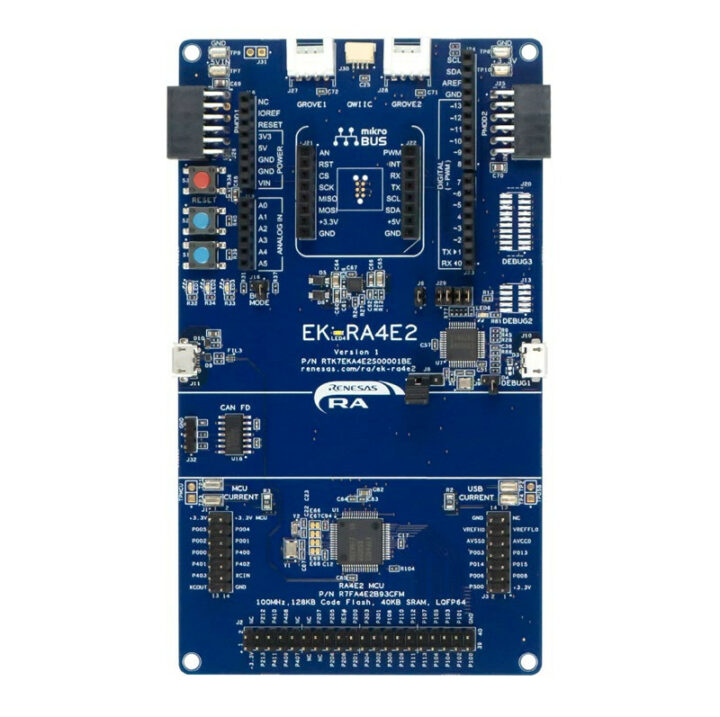
You’ll find more information, documentation, design package, development tools, and software on the devkit product page.
Renesas RA6E2 MCU Group
The RA6E2 group is almost identical to the RA4E2 group, except for the higher 200 MHz core frequency, the ability to select 128KK or 256KB flash, and one QSPI interface that is missing from the lower-end MCU group.
Key Features of the RA6E2 group:
- CPU – Arm Cortex-M33 core with TrustZone @ up to 200 MHz
- Memory – 40 kB SRAM, 1kB standby SRAM
- Storage – 128kB or 256KB flash, 4kB data flash to store data as in EEPROM
- Peripherals – GPIO, 12-bit ADC, 12-bit DAC, USB 2.0 full-Speed Device, SCI, SPI, I3C, HDMI CEC, SSI, PWM, QSPI, and CAN FD
- Misc – Internal oscillator, low-voltage detection, internal reset function
- Power consumption – 80 µA / MHz in active mode while executing at 200 MHz
- Packages – 32- to 64-pin packages: LQFP64, BGA36, BGA64, QFN32, QFN48
- Temperature Range – -40 to 105°C

The RA6E2 doubles the number of devices to 10 compared to the RA4E2 simply because of versions with 128KB or 256KB flash. The RA6E2 is also positioned as an entry-level MCU group but clocked at a higher 200 MHz frequency.
Software development options are the same as for the RA4E2 family, and Renesas also offers a similar RTK7EKA6E2S00001BE development kit with PMOD, Grove, Qwiic, and mikroBUS connectors for expansion, as well as on-board debugging using SEGGER J-Link.
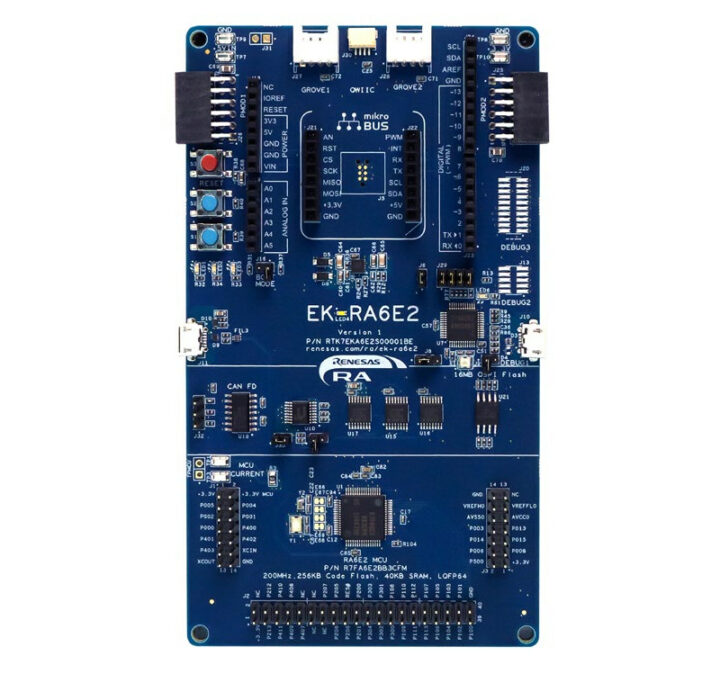
Renesas has designed one of their so-called “Winning Combination” with the “Add-on Voice User Interface (VUI)” solution/reference design based on the RA6E2 MCU designed to add a Voice User Interface to devices such as thermostats or appliances. In this design, the RA6E2 MCU handles all tasks related to the voice interface without relying on the host MCU.
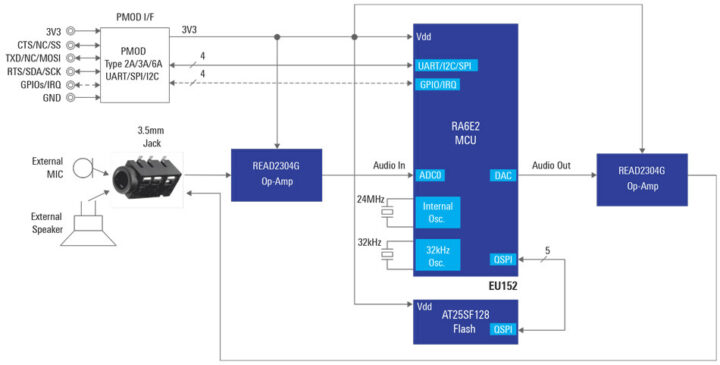
Availability
Renesas says the RA4E2 and RA6E2 Cortex-M33 MCUs are available today, and so are the development kits with the RTK7EKA4E2S00001BE devkit in stock at Digi-Key for $82.50. Additional information can be found on the product pages for the RA4E2 and RA6E2 MCU groups, as well as in the press release for Embedded World 2023.

Jean-Luc started CNX Software in 2010 as a part-time endeavor, before quitting his job as a software engineering manager, and starting to write daily news, and reviews full time later in 2011.
Support CNX Software! Donate via cryptocurrencies, become a Patron on Patreon, or purchase goods on Amazon or Aliexpress


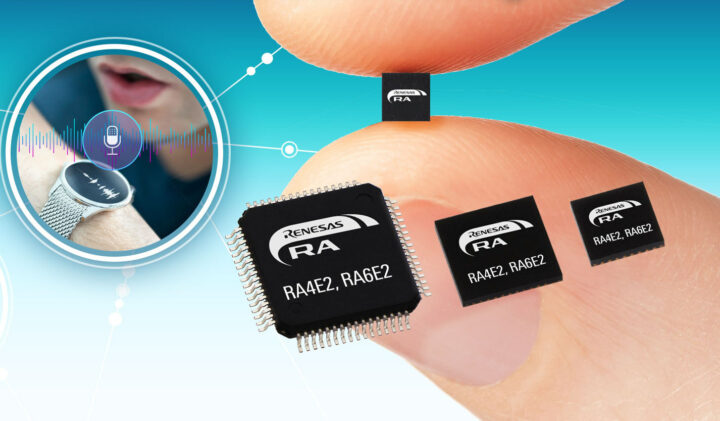
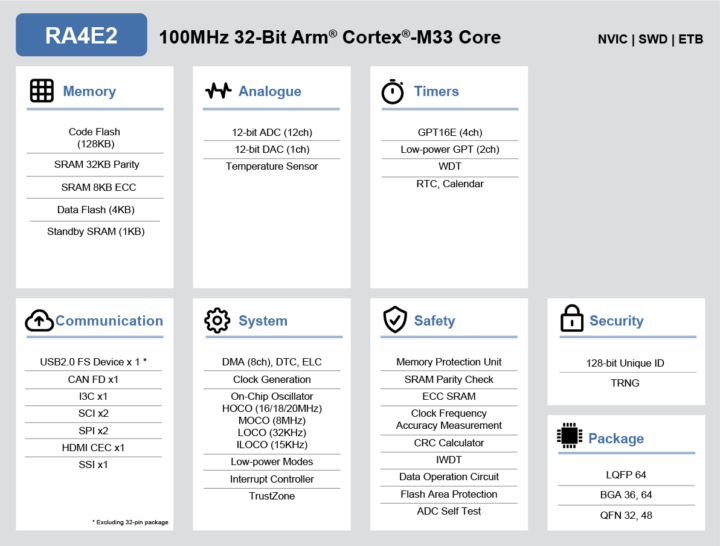

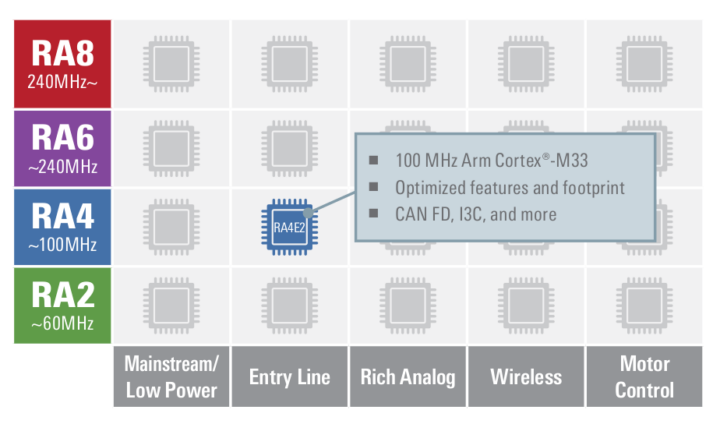
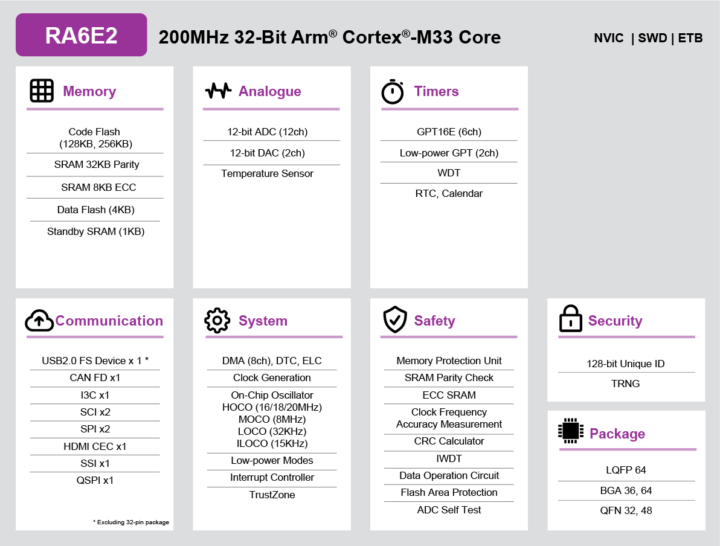
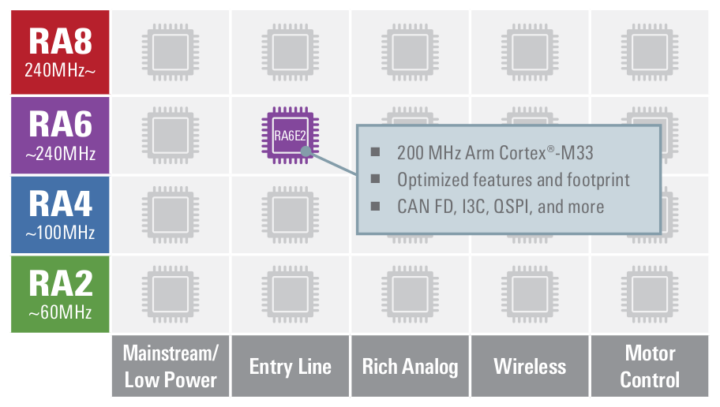


pricing a simple devkit for such a lightweight device category at 82.50 US$ is something that would still have seemed normal enough to me 15 years ago, but today it seems quite far out of touch with reality and the competition.
Outside of much higher device price+perfomance ranges (where you can still occasionally find that dinosaur mentality of pricing devkits and such as if they were a business segment of its own with its own separate break-even point), it’s now more common for semiconductor manufacturers to realize that devkits are really more a matter of good marketing, in that they are a part of what gets the foot in the door.
The right strategy is to make that first step as easy, cheap and seductive as possible for devs, so as to get your devices into the hands of lots of devs, so as to build community and dev mindshare around your devices.
The right strategy as a chip manufacturer is to make sure that EECS students use YOUR new devkit for their tinkering projects and that seasoned devs don’t think “might consider that devkit later… if their part makes it far enough through selection process for the next project” but “petty cash, no-brainer, why not just order it right away so we can play with it a little and see”.
82.50 US$ is totally insignificant compared to the price of the parts I order, but it’s far enough above the peanuts threshold to make the difference between the former and the latter. And that’s just bad marketing. The manufacturers that were smart enough to recognize that have quite an advantage, because getting your devices into the hands and brains of devs as early as possible gives them quite an advantage in the selection process.
Should we expect to see one of these show up in an Arduino Pro board? IIRC, they’re the only one using these for a SoC visible customer product.
Damn, I didn’t expect to be rigth this quickly.
The Arduino Portenta C33 is using the RA6M5 microcontroller, so not exactly the one mentioned here, but I reckon it’s close enough.
Yeah, sorry, I was a bit premature. I thought the new R4 was using one of these, but it’s a bit older one.
I wish Renesas had better MicroPython support. Currently some RA family devices have partial support, but definitely would be nice having complete device support. For me one of the most interesting member of the RA family is RA2A1, offering extensive analog functionalities like 16-bit SAR ADC, 24-bit Sigma-Delta ADC, comparators, operational amplifiers, and DACs. However apparently the Flash of the device 256 kB is too small for the current version of MicroPython.
Renesas micros are weird, their peripherials are even more weird, and Renesas’ attitude towards small/independant developers is atrocious. Which means I would avoid Renesas even if the price was sane.
I used to work with NEC/Renesas microcontrollers and I had no complaints about the technical part. But I initially worked for a large French company in China, and the company FAE/sales would visit/contact me frequently or even take me for lunch from time to time. I then moved to a small Hong Kong company in the same area in China, and I had a project that could make use of their MCU, and they just ignored my emails… It was a long time ago, but maybe the company culture has not changed 🙂